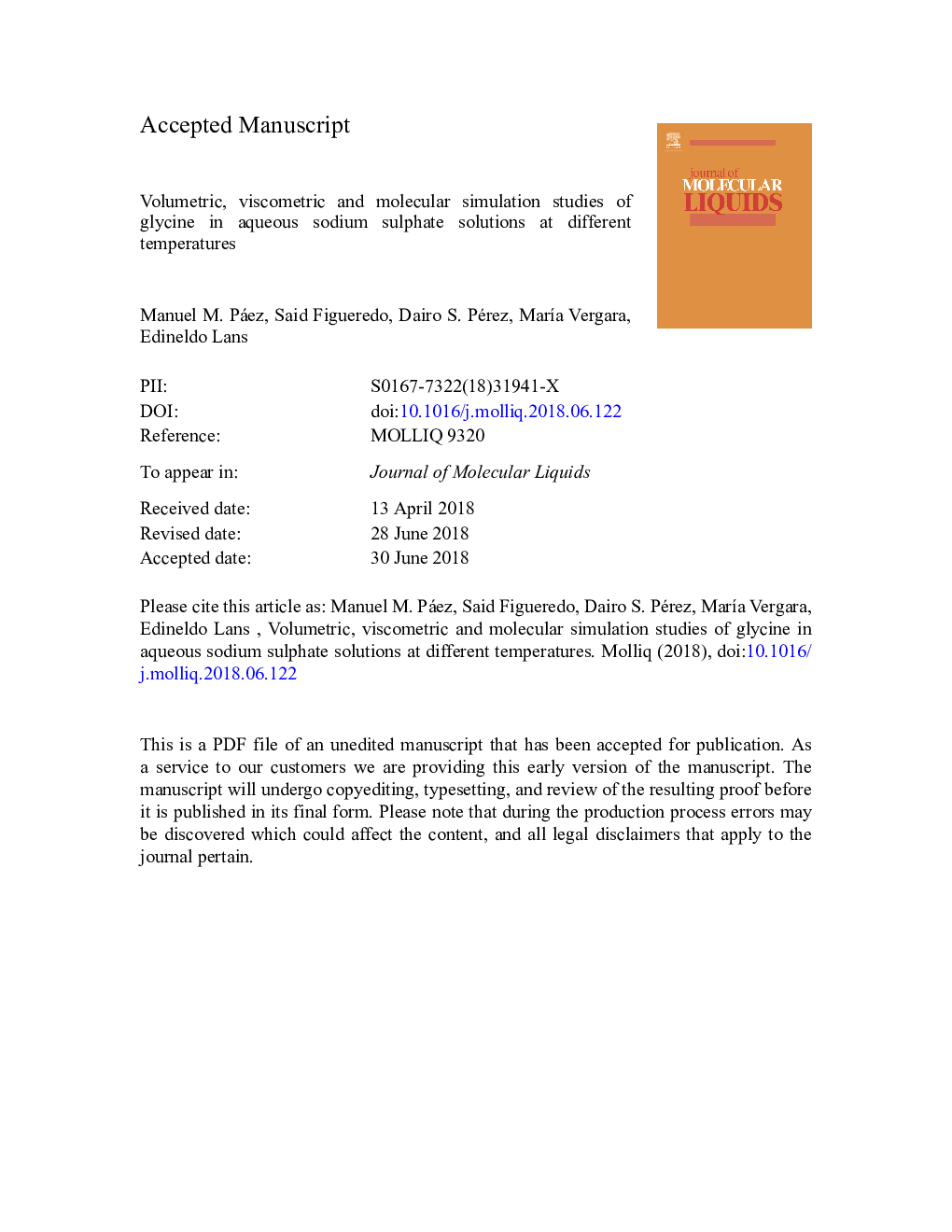| کد مقاله | کد نشریه | سال انتشار | مقاله انگلیسی | نسخه تمام متن |
|---|---|---|---|---|
| 7841960 | 1506505 | 2018 | 22 صفحه PDF | دانلود رایگان |
عنوان انگلیسی مقاله ISI
Volumetric, viscometric and molecular simulation studies of glycine in aqueous sodium sulphate solutions at different temperatures
ترجمه فارسی عنوان
مطالعات شبیه سازی حجمی، ویسکومتریک و مولکولی گلیسین در محلول های سولفات سدیم آب در دماهای مختلف
دانلود مقاله + سفارش ترجمه
دانلود مقاله ISI انگلیسی
رایگان برای ایرانیان
کلمات کلیدی
محلول آبی، تراکم، ویسکوزیته، حجم مولار جزئی انتقال، شماره هیدراتاسیون،
موضوعات مرتبط
مهندسی و علوم پایه
شیمی
شیمی تئوریک و عملی
چکیده انگلیسی
The densities and viscosities of Glycine in five aqueous solutions of Sodium Sulphate, were measured in the temperature range from 283.15 to 308.15â¯K at intervals of 5â¯K, using a vibrating U-tube densimeter Anton Paar DMA 5000 and the Automatic Microviscosimeter AMVn, respectively. The measured densities were used to calculate the limit-apparent molar volume (VÏ0), limit-transfer molar volume (ÎtrVÏ0)and hydration number (nh). The partial volumes at infinite dilution of the glycine in aqueous solution of sodium sulfate were evaluated through extrapolation at each temperature. The behavior of ÎtrVÏ0 was interpreted in terms of solute-solvent interactions on the basis of the cosphere-overlap model. The hydration numbers were positive and interpreted in terms of dehydration and electrostriction effects. The relative viscosity data were adjusted by least-squares for obtain the Jones-Dole equation coefficients A, B and D. To accompany the experimental results, a series of small molecular complexes simulating the interactions present in the glycineâ¯+â¯water/sodium sulfate systems were modeled by the Density Functional Theory with the basis function 6-31G(d). From viscosity dates, the activation parameters of the viscous flow (free molar energy of Gibbs ÎGâ , enthalpy ÎHâ , and entropy ÎSâ ) were evaluated. The temperature dependence of the partial molar volume at infinite dilution and the viscosity B coefficient were discussed in terms of the dominant interactions in solution; it was found that the glycine has a making effect in the structure of the solvent, and at infinite dilution ion-solvent interactions are dominant between NH3+ and COOâ groups of the amino acid with Na+ and SO42â ions. From the theoretical point of view, the complexes studied turned out to be stable and represent a good approximation to rationalize the intermolecular interactions that occur in glycineâ¯+â¯water/sodium sulphate mixtures.
ناشر
Database: Elsevier - ScienceDirect (ساینس دایرکت)
Journal: Journal of Molecular Liquids - Volume 266, 15 September 2018, Pages 718-726
Journal: Journal of Molecular Liquids - Volume 266, 15 September 2018, Pages 718-726
نویسندگان
Manuel Páez, Said Figueredo, Dairo Pérez, MarÃa Vergara, Edineldo Lans,
